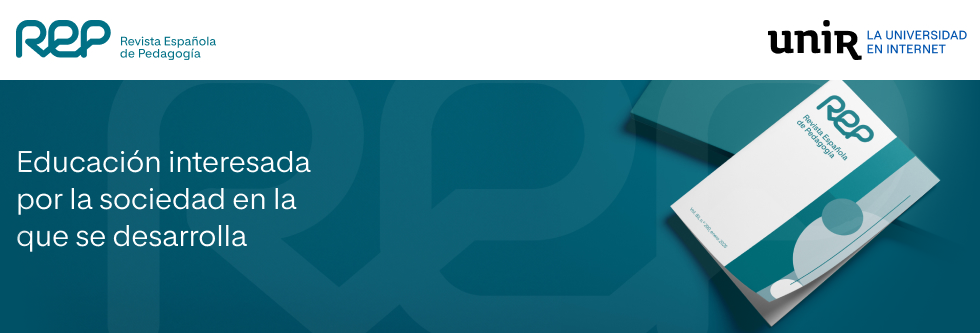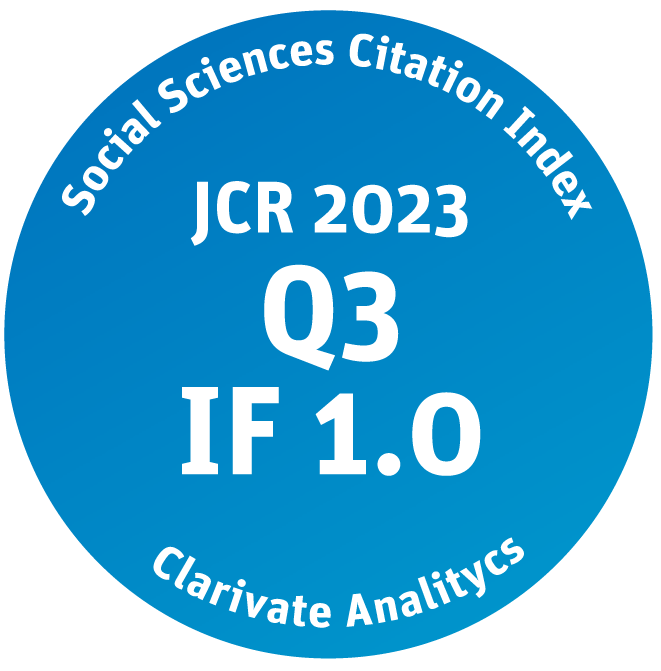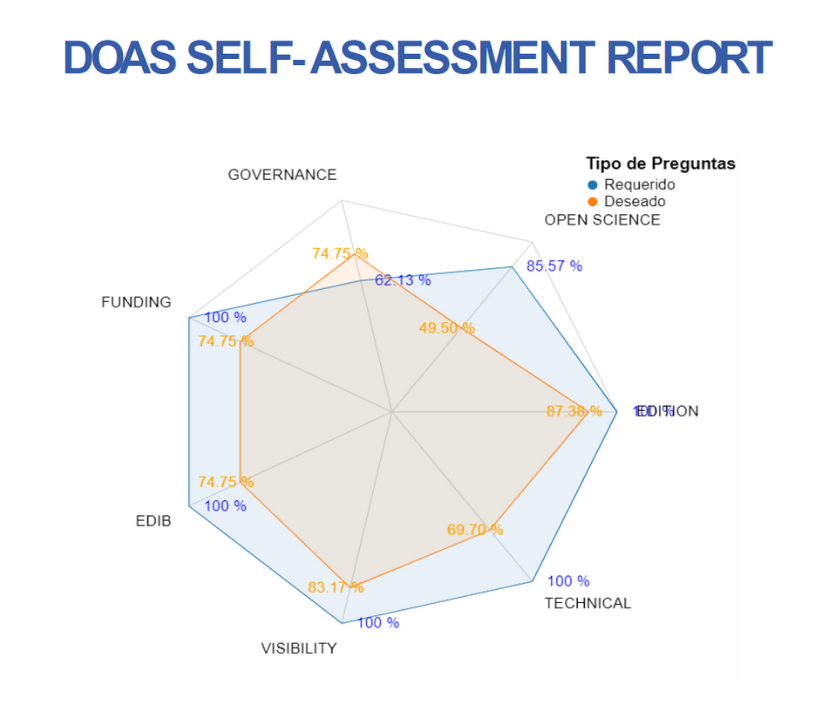Impacto en el rendimiento académico de la inmersión lingüística y del índice socioeconómico y cultural
DOI
10.22550/2174-0909.4178
Abstract
The question of language in school has an educational dimension of considerable social interest in Spain since a strong process of immersion in regional languages might be affecting students’ performance depending on their linguistic and socio-cultural background. In this context, the paper’s aim is to analyse the relations between economic, social, and cultural status (ESCS); the percentage of students who speak a different language at school than at home (language) and school performance in PISA (performance); and in particular to measure the predictive power of the second variable with respect to the third, from a territorial perspective. A methodology was developed based on bivariate linear regression analysis and structural equation modelling, and was applied to data regarding these three variables from the PISA 2015 and PISA 2022 databases. These secondary analyses have confirmed: (a) the importance of the predictive power of ESCS on performance consistently in both 2015 and 2022; (b) the intensification of the association between the two variables in that period; and (c) the emergence of a moderate but significant association of the language variable as a predictor of Performance at the territorial level. The impact of regional ESCS differences on performance increased significantly between 2015 and 2022, which is compatible with an increase in other territorial divides described in the literature. Moreover, the strong linguistic immersion models display significant differences between territories in terms of performance. For example, for this reason alone, Catalonia’s delay compared to Madrid is approximately one school year.
Referencias | References
Bacher-Hicks, A., Goodman, J., & Mulhern, C. (2021). Inequality in household adaptation to schooling shocks: Covid-induced online learning engagement in real time. Journal of Public Economics, 193, 104345. https://doi.org/10.1016/j.jpubeco.2020.104345
Ball, J. (2011). Enhancing learning of children from diverse language backgrounds: Mother tongue-based bilingual or multilingual education in the early years. United Nations Educational, Scientific and Cultural Organization (UNESCO). https://unesdoc.unesco.org/ark:/48223/pf0000212270
Benson, C. (2004). The importance of mother tongue-based schooling for educational quality. United Nations Educational, Scientific and Cultural Organization (UNESCO). https://unesdoc.unesco.org/ark:/48223/pf0000146632
Bialystok, E., Craik, F. I., & Luk, G. (2012). Bilingualism: Consequences for mind and brain. Trends in Cognitive Sciences, 16 (4), 240-250.
Bryman, A., & Cramer, D. (1994). Quantitative data analysis for social scientists. Routledge.
Bühmann, D., & Trudell, B. (2007). Mother tongue matters: Local language as a key to effective learning. United Nations Educational, Scientific and Cultural Organization (UNESCO). https://unesdoc.unesco.org/ark:/48223/pf0000161121
Bulut, O., Delen, E., & Kaya, F. (2012). An SEM model based on PISA 2009 in Turkey: How does the use of technology and self-regulation activities predict reading scores? Procedia - Social and Behavioral Sciences, 64, 564-573. https://doi.org/10.1016/j.sbspro.2012.11.066
Calero, J., & Choi, Á. (2019). Efectos de la inmersión lingüística sobre el alumnado castellanoparlante en Cataluña [Effects of linguistic immersion on Spanish-speaking pupils in Catalonia]. Fundación Europea Sociedad y Educación. https://sociedadyeducacion.org/site/wp-content/up-loads/SE-Inmersion-Cataluna.pdf
Carabaña, J., & Fernández-Enguita, M. (2019). Enseñanza en lenguas regionales y sentimiento de pertenencia a la escuela [Schooling in regional languages and sense of belonging at school]. Journal of Supranational Policies of Education, (9), 57-94. http://doi.org/10.15366/jospoe2019.9.002
Castro, M., & Egido, I. (2024). Qué sabemos sobre el profesorado. Políticas, evidencias y perspectivas de futuro [What we know about teachers. Policies, evidence and future perspectives]. Narcea.
Chetty, R., Friedman, J. N., Hendren, N., & Stepner, M. (2020). How did covid-19 and stabilization policies affect spending and employment? A new real-time economic tracker based on private sector data. NBER Working Paper, (27431). https://doi.org/10.3386/w27431
Clots-Figueras, I., & Masella, P. (2013). Education, language and identity. The Economic Journal, 123 (570), 332-357.
Cummins, J. (2001). Bilingual children’s mother tongue: Why is it important for education? Sprogforum,7 (19),15-20.
Epskamp, S., Stuber, S., Nak, J., Veenman M., & Jorgensen T. D. (2019). semPlot: Path diagrams and visual analysis of various SEM packages’ output [Computer Software]. https://CRAN.R-project.org/package=semPlot
Foguet, J. M. B., & Gallart, G. C. (2000). Modelos de ecuaciones estructurales [Structural equation modelling]. La Muralla.
Gairín, J. (2024). Dirección y liderazgo de los centros educativos. Naturaleza, desarrollo y práctica profesional [School management and leadership. Nature, development and professional practice]. Narcea.
Gallucci, M., & Jentschke, S. (2021). SEMLj: jamovi SEM Analysis [Computer Software]. https://semlj.github.io/
Hattie, J. (2023). Visible learning: The sequel. A synthesis of over 2,100 meta-analyses relating to achievement. Routledge.
Hovens, M. (2002). Bilingual education in West Africa: Does it work? International Journal of Bilingual Education and Bilingualism, 5 (5), 249-266.
Kim, J. O., & Kohout, F. J. (1988). Special topics in general linear models. In N. H. Nie, D. H. Bent, & C. H. Hull, Statistical package for the social sciences. McGraw- Hill.
López-Rupérez, F., García-García, I., & Expósito Casas, E. (2018). PISA 2015 y las comunidades autónomas españolas. Diagnósticos y políticas de mejora [PISA 2015 and the Spanish autonomous communities. Diagnostics and improvement policies]. Universidad Camilo José Cela. https://www.ucjc.edu/pdfs/universidad/pisa2015_ccaa.pdf
López-Rupérez, F., García-García, I., & Expósito- Casas, E. (2019a). Rendimiento en ciencias, concepciones epistémicas y vocaciones STEM en las comunidades autónomas españolas. Evidencias desde PISA 2015, políticas y prácticas de mejora [Performance in science, epistemic conceptions, and STEM vocations in Spain’s autonomous communities: evidence from PISA 2015, improvement policies, and practices]. Revista Española de Pedagogía, 272 (77), 5-27. https://doi.org/10.22550/REP77-1-2019-09
López-Rupérez, F., García-García, I., & Expósito- Casas, E. (2019b). Educational effectiveness, efficiency, and equity in Spanish regions: What does PISA 2015 reveal? ORBIS SCHOLAE, 12 (2), 9-36. https://doi.org/10.14712/23363177.2018.291
López-Rupérez, F., García-García, I., & Expósito-Casas, E. (2019c). Igualdad de oportunidades e inclusión educativa en España [Equal opportunities and educational inclusion in Spain]. RELIEVE, 25 (2), 1. http://doi.org/10.7203/relieve.25.2.14351
López-Rupérez, F., García-García, I., & Expósito- Casas, E. (2021). La repetición de curso y la graduación en Educación Secundaria Obligatoria en España: análisis empíricos y recomendaciones políticas [Grade repetition and graduation in compulsory secondary education in Spain: Empirical analysis and policy recommendations]. Revista de Educación, 394, 325-354. https://doi.org/10.4438/1988-592X-RE-2021-394-510
López-Rupérez, F., & García-García, I. (2023, 11 Decembre). PISA 2022 y la cuestión territorial en España [PISA 2022 and the territorial question in Spain]. Magisnet. https://www.magisnet.com/2023/12/pisa-2022-y-la-cuestion-territorial-en-espana/
OECD. (2016). PISA 2015 results (volume I). Excellence and equity in education. OECD Publishing. https://doi.org/10.1787/9789264266490-en
OECD. (2023). PISA 2022 results (volume I). The state of learning and equity in education. OECD Publishing. https://doi.org/10.1787/53f23881-en
Parliamentary Assembly. (2006). The place of mother tongue in school education (Doc.10837). Committee on Culture, Science and Education. Council of Europe. https://assembly.coe.int/nw/xml/XRef/X2H-Xref-ViewHTML.asp?FileID=11142&lang=EN
Pearl, J., y Mackenzie, D. (2020). El libro del porqué. La nueva ciencia de la causa y el efecto [The book of why. The new science of cause and effect]. Pasado y Presente.
Pérez, E., Medrano, L. A., & Sánchez-Rosas, J. (2013). El path analysis: conceptos básicos y ejemplos de aplicación [Path analysis: Basic concepts and examples]. Revista Argentina de Ciencias del Comportamiento, 5 (1), 52-66.
Pinnock, H. (2009a). Language and education. The missing link. How the language used in schools threatens the achievement of education for all. CfBT Education Trust & Save the Children. https://resourcecentre.savethechildren.net/pdf/1674.pdf/
Pinnock, H. (2009b). Steps towards learning: A guide to overcoming language barriers in children´s education. Save the Children. https://www.savethechildren.org.uk/content/dam/global/reports/steps-towards-learning-lr.pdf
Reilly, C. (2019). Language and development: Issues in mother tongue based multilingual education [Inedit Manuscript]. https://www.researchgate.net/publication/343768795_Language_and_development_Issues_in_mother-tongue_based_multilingual_education#fullTextFileContent
Rodríguez, P. (2023, 7 Diciembre). Catalunya se pregunta por qué se ha hundido más que el resto de España en PISA [Catalonia wonders why it has sunk further than the rest of Spain in PISA]. Eldiario.es. https://www.eldiario.es/catalunya/catalunya-pregunta-hundido-resto-espana-pisa_1_10748162.html
Rodríguez-Sanmartín, O. (2023, 19 Diciembre). Los alumnos de Cataluña son los que muestran el mayor rechazo a la escuela de toda España [Pupils in Catalonia show the highest level of rejection of school in Spain]. El Mundo. https://www.elmundo.es/espana/2023/12/19/6581fb- 22fdddff570d8b45b5.html
Rosseel, &. (2012). Iavaan: An R package for structural equation modeling. Journal of Statistical Software, 48 (2), 1-36. https://doi.org/10.18637/jss.v048.i02
Salas, A. A., Navarro, R., & Montero, E. (2017). Un modelo de ecuaciones estructurales para el estudio de factores que afectan la competencia lectora y la alfabetización matemática: una aproximación bayesiana con datos de PISA 2009 [A structural equation model for the study of factors affecting reading literacy and mathematical literacy: A Bayesian approach using PISA 2009 data]. Estadística Española, 59 (194), 167-192.
Sanz, I., & Tena, J.D. (2023). The impact of the covid-19 pandemic on education learning. In J. Sanz, & I. Sanz (Eds.), Addressing inequities in modern educational assessment (pp. 15-36). Springer. https://doi.org/10.1007/978-3-031-45802-6_2
Schermelleh-Engel, K., Moosbrugger, H., & Müller, H. (2003). Evaluating the fit of structural equation models: Tests of significance and descriptive goodness-of-fit measures. Methods of Psychological Research, 8 (2), 23-74.
Soler, A. (2022). Heterogeneidad regional en el abandono educativo temprano [Regional heterogeneity in early school dropout rates]. Magisterio, 24-25.
Swe, K.M., Fraser, B. J., & Afari, E. (2020). Structural relationships between learning environments and students’ non-cognitive outcomes: Secondary analysis of PISA data]. Learning Environments Research, 23 (3), 395-412. https://doi.org/10.1007/s10984-020-09313-2
The jamovi project. (2022). jamovi (version 2.3) [Computer Software]. https://www.jamovi.org
Thomas, W. P., & Collier, V. P. (1997). School effectiveness for language minority students. National Clearinghouse for Bilingual Education. https://ncela.ed.gov/sites/default/files/legacy/files/rcd/BE020890/School_effectiveness_for_langu.pdf
Thomas, W. P., & Collier, V. P. (2002). A national study of school effectiveness for language minority students’ long-term academic achievement. Center for Research on Education, Diversity and Excellence. https://escholarship.org/uc/item/65j213pt
UNESCO. (1953). The use of the vernacular languages in education. Organización de las Naciones Unidas para la Educación, la Ciencia y la Cultura (UNESCO).
UNESCO. (2016). Si no entiendes, ¿cómo puedes aprender? Informe de seguimiento de la educación en el mundo [If you don’t understand, how can you learn? Global education monitoring report]. Organización de las Naciones Unidas para la Educación, la Ciencia y la Cultura (UNESCO). https://unesdoc.unesco.org/ark:/48223/pf0000243713_spa
UNESCO-IIEP. (2021, 23 de septiembre). La lengua de enseñanza [The language of teaching]. https://bit.ly/3UsQE2C
Woessmann, L., Freundl, V., Grewenig, E., Lergetporer, P., Werner, K., & Zierow, L. (2020). Bildung in der Coronakrise: Wie haben die Schulkinder die Zeit der Schulschließungen verbracht, und welche Bildungsmaßnahmen befürworten die Deutschen? [Education during the coronavirus crisis: How have schoolchildren spent the period of school closures and what educational measures are Germans in favour of?]. ifo Schnelldienst, 9, 25-39.
Citación recomendada | Recommended citation
López-Rupérez, F., Moraleda-Ruano, Á., & García-García, I. (2024). The impact of linguistic immersion and economic, social and cultural status on academic performance [Impacto en el rendimiento académico de la inmersión lingüística y del índice socioeconómico y cultural]. Revista Española de Pedagogía, 82 (289), 515-537. https://doi.org/10.22550/2174-0909.4178
Licencia Creative Commons | Creative Commons License
Esta obra está bajo una licencia internacional Creative Commons Atribución-NoComercial 4.0.
This work is licensed under a Creative Commons Attribution-NonCommercial 4.0 International License
Included in
Palabras clave | Keywords
immersion programmes, academic achievement, educational equity, educational policy, educational assessment, structural equation modelling.








